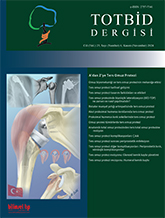
Proximal humerus fractures are common in elderly population, accounting for 5-6% of adult fractures, with increasing incidence due to osteoporosis and aging. The treatment of proximal humerus fractures, particularly in elderly patients, remains debated. While many fractures can be treated conservatively, surgical intervention is often necessary for more complex cases. Reverse shoulder prosthesis has become a preferred option for managing three- and four-part fractures and fractures with a high risk of avascular necrosis especially in elderly patients. Reverse shoulder prosthesis offers several advantages over partial prosthesis, particularly in terms of forward flexion, abduction, and overall functional outcomes, although rotational movement may be better with partial prosthesis in some cases. Studies indicate that reverse shoulder prosthesis provides better results in treating acute proximal humerus fractures, particularly in elderly patients, with lower revision and re-operation rates compared to other surgical methods. Tuberosity healing, which is less crucial for reverse shoulder prosthesis than for partial prosthesis, leads to more predictable outcomes. While reverse shoulder prosthesis is associated with a slightly higher complication rate, many complications are radiological and do not affect clinical outcomes. Additionally, reverse shoulder prosthesis offers improved pain relief and faster functional recovery. In conclusion, reverse shoulder prosthesis has emerged as a superior treatment option for acute proximal humerus fractures, especially in elderly patients. It not only reduces pain and improves the range of motion but also lowers the risk of revision surgeries compared to traditional methods like partial prosthesis or osteosynthesis. This makes reverse shoulder prosthesis a valuable tool in managing complex humeral fractures, ensuring better long-term outcomes for elderly patients.